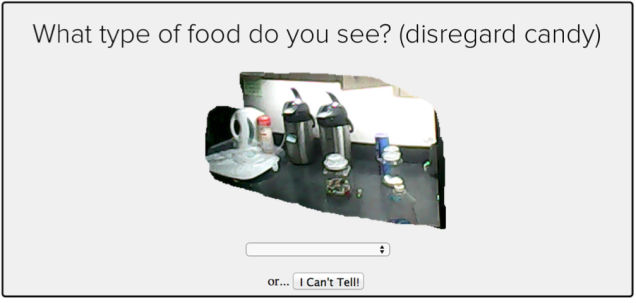A Yahoo-backed startup called Zensors has been teasing a plan (and is now accepting beta testing applications) for a technology that foregoes the usual approach of making all kinds of things "smart" and instead using cheap cellphones and web cameras to identify, assess and track dumb objects in ordinary environments without the need for passive tags or active sensors.

Once identified by the system, the objects can then be tracked and analyzed, presumably across multiple phones or cameras. Even though the technoloy is pretty advanced (it was initially developed by a team at Carnegie Mellon and was then funded by Yahoo as part of their InMind Project). However, the AI is not quite smart enough to identify everything it sees... yet. That's where Amazon's Mechanical Turk platform comes in.
If you're not familiar with it, Mechanical Turk allows you to create a list of simple tasks and have them completed by an army of Internet workers, typically for a small fee per task. In the past we've used the system to quickly evaluate dozens of variables that affect the effectiveness of digital signage systems, and while our results weren't perfect, given the low cost of the program and the speed with which we could iterate over thousands of permutations, it functioned extremely well.
Apparently the researchers at Zensors think so too, because they're leveraging the Mechanical Turk platform to help teach their system about the things in your home and environment. As the human MT workers monitoring the Zensors sensors tag items and add descriptions, the Zensors system adds that information to a database, giving it a better chance of auto-identifying the object (and other similar objects) the next time it enconters them. Assuming the approach works, the massive database that they accumulate (combined with their proprietary item-identification technology, of course) could give Zensors a leg up on competitors who seek to make things "smart" by enabling them with other technologies.
Of course, it might also (finally) be a legitimate reason to trust your smart-home data to the cloud.

 Subscribe to the M2M Insider RSS feed
Subscribe to the M2M Insider RSS feed